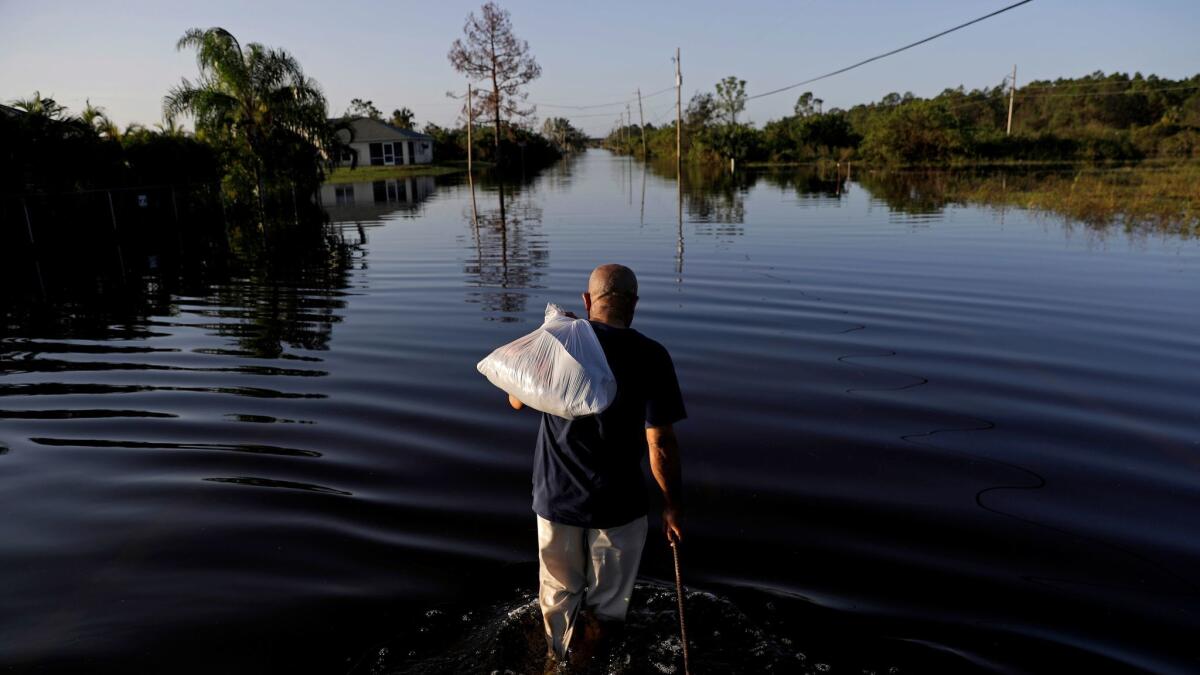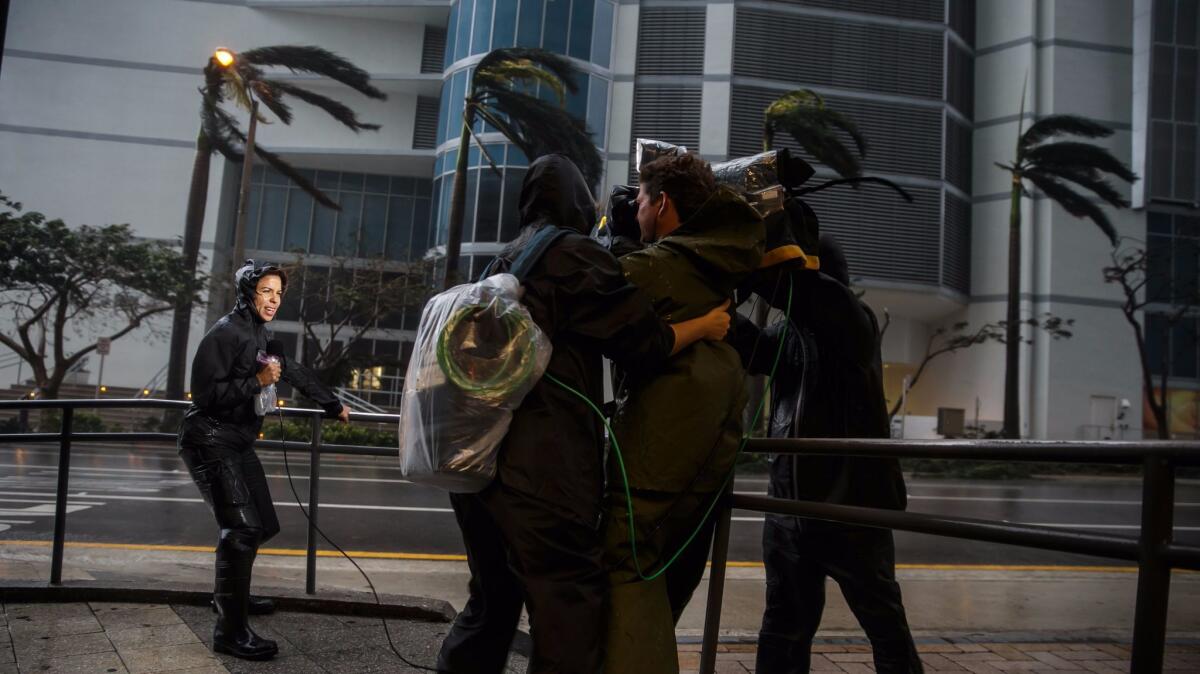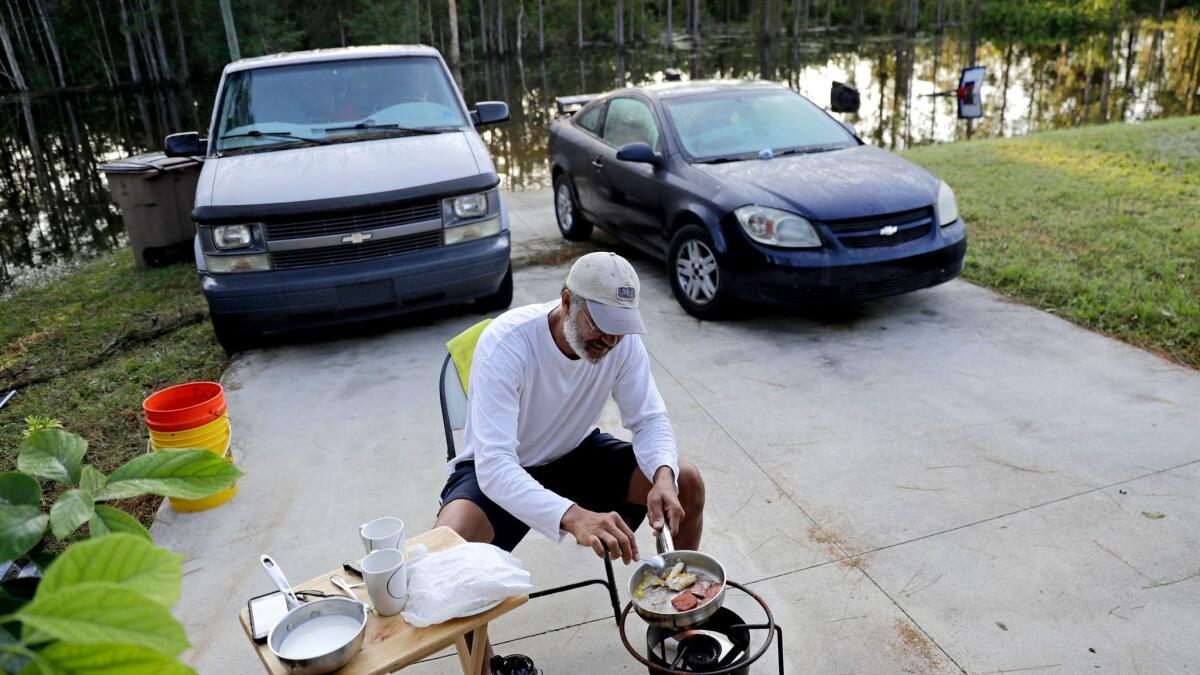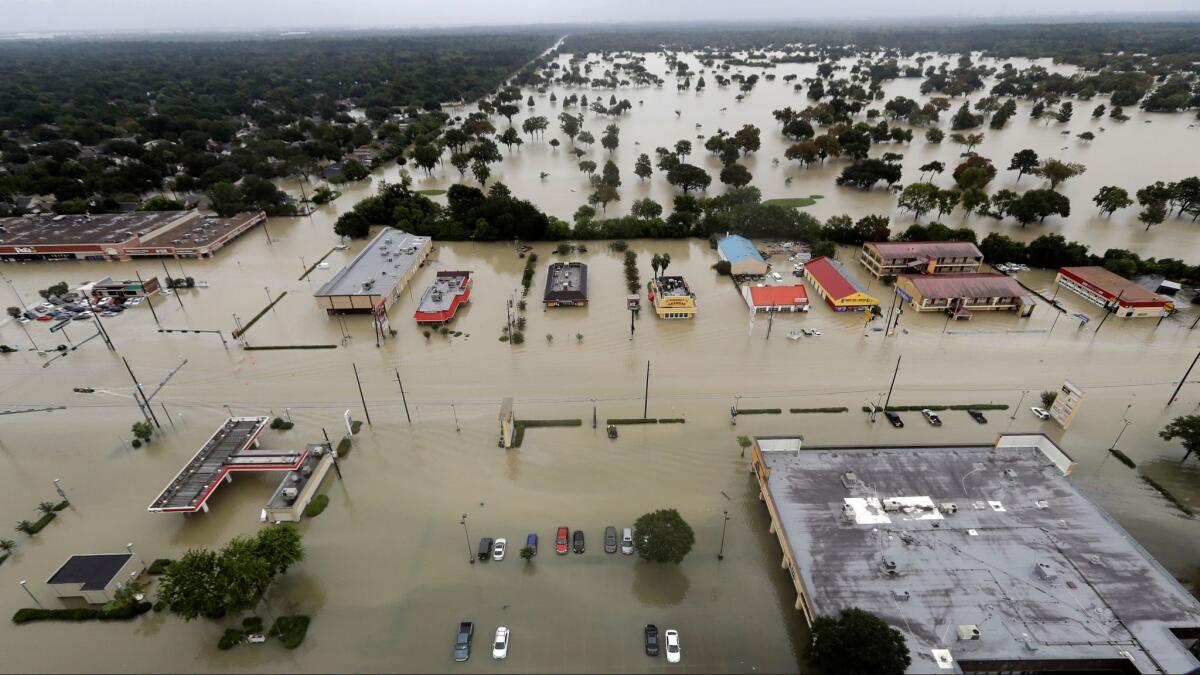A look at Hurricane Irma by the numbers

Hurricane Irma made landfall in the Florida Keys as a Category 4 hurricane on Sunday, slamming into the state and moving inland. On Monday, Irma took out power for about 7 million people before being downgraded to a tropical depression.
Even so, the storm continues to assert its presence, with 2 to 5 inches of rain — and as much as 8 inches in isolated pockets — expected through Wednesday across South Carolina and northern Georgia, Alabama and Mississippi into Tennessee and North Carolina.
Here’s some of what we know by the numbers.
185 mph
Irma’s peak wind speed, making it the most powerful hurricane ever recorded in the open Atlantic.
142 mph
The speed of gusts near the storm’s eye in Naples. Tropical-storm-strength winds were churning as far as 220 miles away from Irma’s center.

6.4 million
People told to flee in Florida in advance of the storm, leading to days of jampacked highways and frantic searches for gasoline amid one of the nation’s largest ever emergency evacuations. In total, nearly 7 million people in the Southeast were told to shelter or evacuate.
37
Reported fatalities in the Caribbean, as of Monday afternoon. Such tolls are difficult to determine because it is sometimes impossible to tell whether a death was the direct result of a storm.
More than 200,000
Number of Floridians still in shelters as of Monday afternoon.

Live updates on the continuing threat of Irma and its aftermath »
Nearly 7.2 million
The number of homes and businesses that were without power in multiple states, as of midday Monday. More than 6.5 million were in Florida.

10 to 12 feet
The height of the storm surges expected in the Naples-Fort Myers area. A 10-foot storm surge at sea level can submerge the first floor of a building in minutes. Hurricane Katrina in 2005 was only a Category 3 storm, but it was immense in size. With a storm surge of 28 feet, combined with a broken levee, the city of New Orleans was quickly underwater. About 1,800 people lost their lives in the storm — the majority from drowning.

2
The number of Category 4 hurricanes that have made landfall in the United States in the last two weeks. The U.S. mainland has never before endured two Category 4 hurricanes in the span of a year

2.4 million
The numbers of meals FEMA transferred at Florida’s request. The federal emergency agency also provided 1.4 million liters of water.
95%
The initial estimate of properties on the island of Barbuda that were damaged or destroyed. Later, Gaston Browne, the prime minister of Antigua and Barbuda, said the losses were probably even worse. About 1,600 Barbuda residents were evacuated to Antigua.


20 feet
The size of the waves that pounded Havana.
96 years
Since the Tampa Bay area was in the bull’s-eye of a major hurricane. The so-called Tarpon Springs Hurricane struck the Tampa Bay-St. Petersburg area on Oct. 25, 1921, as a powerful Category 3 storm. A storm surge estimated at 11 feet destroyed substantial portions of the sea wall and inundated several areas.

5
The number of times Florida’s Disney World has had to close since the resort opened in 1971. All major attractions were closed Sunday and Monday as the storm worked its way up the length of the state.
51
The number of cruises that were canceled, shortened or revised due to Hurricane Irma, according to Cruise Critic.
1
Tropical storm warnings in Atlanta. Monday’s warning was a first for Georgia’s largest city.
Sign up for Essential California
The most important California stories and recommendations in your inbox every morning.
You may occasionally receive promotional content from the Los Angeles Times.







